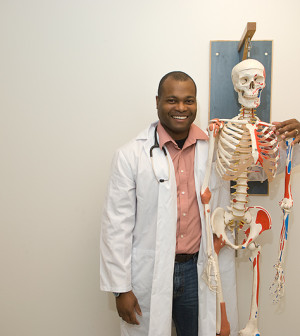- Skip Storing This Everyday Product in the Fridge Door
- Green Tea + B3 Pairing May Boost Brain Health
- Navigating Your Midlife Crisis: Embracing New Possibilities
- City Raccoons Showing Signs of Domestication
- Mapping the Exposome: Science Broadens Focus to Environmental Disease Triggers
- One Week Less on Social Media Linked to Better Mental Health
- Your Brain Changes in Stages as You Age, Study Finds
- Some Suicide Victims Show No Typical Warning Signs, Study Finds
- ByHeart Formula Faces Lawsuits After Babies Sickened With Botulism
- Switch to Vegan Diet Could Cut Your Greenhouse Gas Emissions in Half
Osteoporosis Screening Guidelines May Miss Younger Women at Risk


Current osteoporosis screening guidelines and tools fail to identify many younger postmenopausal women at risk for osteoporosis-related fractures, a new study says.
“If we want to prevent fractures, we need tools that help us accurately predict who will suffer these osteoporotic injuries so that we can target these at-risk people for preventive measures,” study author Dr. Carolyn Crandall, professor of medicine in the division of general internal medicine and health services research at University of California, Los Angeles’ School of Medicine, said in a university news release.
“Our results suggest that our current guidelines for screening in younger post-menopausal women do not accurately identify who will suffer a fracture,” she added.
All women 65 and older should be tested and treated for low bone mineral density, according to recommendations from the U.S. Preventive Services Task Forces (USPSTF). They also recommends bone mineral density screening for postmenopausal women ages 50 to 64 if their 10-year risk for a hip, spinal, forearm or wrist fracture is 9.3 percent or higher, according to the Fracture Risk Assessment Tool.
However, researchers analyzed data from more than 62,000 postmenopausal women in the United States, ages 50 to 64, and found that the USPSTF approach identified only about 26 percent of women who suffered major osteoporosis-related fractures within 10 years.
Two older osteoporosis risk-assessment tools — the Simple Calculated Osteoporosis Risk Estimation Tool (SCORE) and the Osteoporosis Self-Assessment Tool (OST) — were not much better, identifying about 39 percent and 40 percent of women at risk, respectively, according to the new research.
When the researchers broke the data into more specific age groups, they found that the tools and recommendations were least effective for women between 50 and 54, compared to older women.
“Neither the USPSTF nor the other two screening strategies performed better than chance alone in discriminating women who did and did not have subsequent fractures,” the study authors wrote.
“These findings highlight the pressing need for further prospective evaluation of alternative strategies with the goal of better targeting resources to at-risk young postmenopausal women. Our findings do not support use of the USPSTF strategy or the other tools we tested to identify younger postmenopausal women who are at higher risk of fracture,” they concluded.
The study was published in The Journal of Clinical Endocrinology & Metabolism.
More information
The American Academy of Family Physicians has more about osteoporosis.
Source: HealthDay
Copyright © 2025 HealthDay. All rights reserved.










